What is Included in Shipping Costs?
The cost of shipping incorporates any costs involved in getting a product from your warehouse or store to the customer’s doorstep, whether it’s via land, sea, or air. This includes things like the cost of packaging, warehouse labor, carrier fees, transportation, insurance, and shipping taxes.
There are ways to lower these costs, such as using automation in the warehouse and negotiating rates with one or more shipping carriers. However, there are some costs that you just have to shoulder. For example, you can’t skimp on packaging for fragile items, or fail to pay import duties.
Importance of a Robust Shipping Costs Process
Before you set your shipping rates, there are a few things you need to consider. Here are some top tips to get you started building a strong process:
Check Competitors’ Charges
It’s always worth checking out what your competitors are up to, and getting a flavor of the market. If they’re offering low rates, it might be tempting to try to match them—but don’t do this unless you’ve done a thorough calculation and worked out if it’s viable.
Transparency
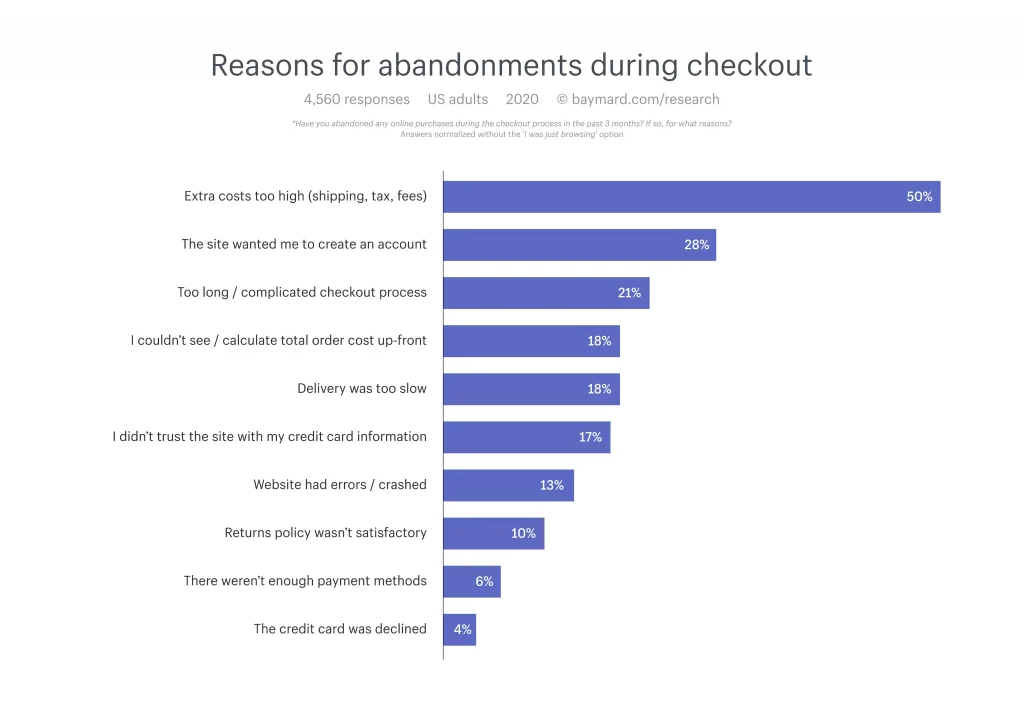
Source: shopify.com
When customers consider purchasing from your online store, shipping fees are one of the first things they’ll look at. Make sure to provide a clear and detailed breakdown of your rates, displayed prominently on your site so there are no nasty surprises at checkout.
Shipping Options
Another thing customers like to see is a good choice of shipping options, so that they can choose the shipping method, speed, and price. This helps them feel in control, and that the experience is personal to them. Multiple options mean complex logistics—stay on top of things by managing fulfillment and shipping in one place with Brightpearl.
How to Calculate Shipping Costs
Creating a shipping strategy involves deciding how you’ll charge your customers. There are a number of options for this:
Calculated Shipping
Calculated shipping means you provide a quote based on the actual item purchased and the delivery location. Just measure the weight and dimensions (including packaging), and enter these details and the address into your carrier’s shipping cost calculator, or use your own information to work out the price.
This method works best if most of your products are the same type and size, otherwise it gets time-consuming. Another option is to offer real-time rates, where shipping prices fluctuate according to current fuel costs and supply chain issues.
Flat-Rate Shipping
Flat-rate shipping is where you charge a single price, regardless of product weight, size, or number of items in the order. You might also charge a flat rate regardless of destination, although this wouldn’t be cost-effective for international shipping.
The advantage is that shoppers are encouraged to purchase more. It’ll cost your company more for larger orders, but you’ll make up the difference with smaller ones. You have to calculate the average shipping cost in order to set flat rates, which you can adjust as your overall costs rise or fall.
Carriers such as the US Postal Service offer flat-rate shipping as long as your item fits into one of their flat-rate boxes.
Free Shipping
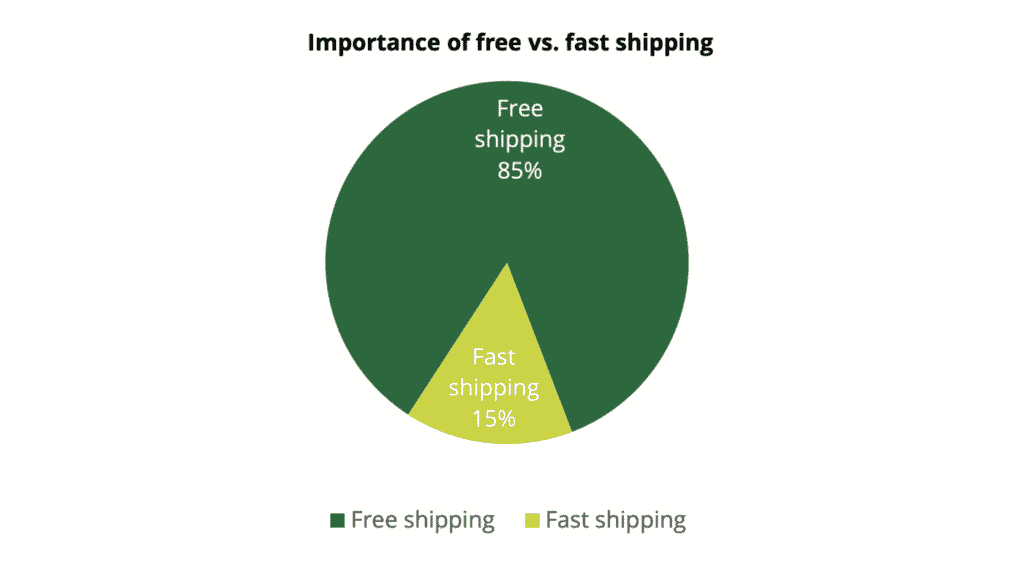
Source: deloitte.com
Customers love free shipping—66% of online shoppers expect it for all orders, while 80% expect shipping to be free over a certain dollar amount. It’s a great way to increase sales, and makes the checkout process less complicated.
To offer free shipping, business owners have two options. Either you bake the cost of shipping into your product prices (which could mean you’re more expensive than competitors), or you shoulder the cost and reduce your margins or make cuts elsewhere, which is difficult for small businesses.
You can mitigate this by setting a threshold, above which shipping is free. This also incentivizes customers to buy more just to get free delivery.
International Shipping
It’s obvious that international shipping is more expensive than domestic. If you want to sell overseas, you must factor in the “landed cost”—the total cost of shipping a product globally. There are lots of variables, including rules and regulations for the countries you’re trading with. (Don’t worry; Brightpearl can help you figure it out.)
Purchase Price
The price you pay to your supplier is a large part of your landed costs. You can negotiate for the best rates, and try to recoup the cost of international shipping via the markup you put on each product. Make sure you declare the value of each shipment correctly, otherwise you could face a surcharge.
Transportation
Again, this is a big cost as the items are traveling long distances. You need to choose the most appropriate method of transport based on the product type, the delivery speed you’ve promised your customers, and the price. Shipping by sea is cheaper than by air because it’s slower.
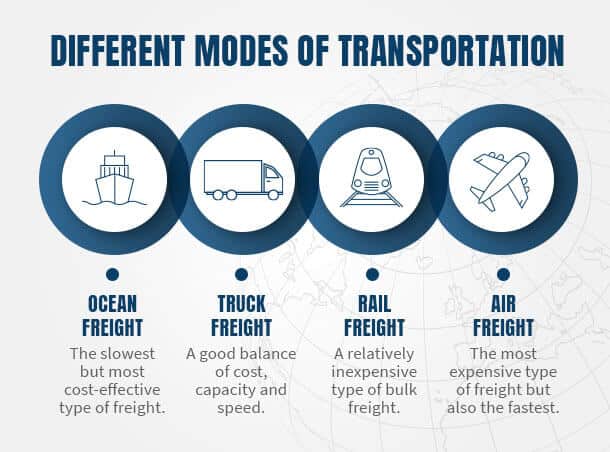
Source: airseacontainers.com
Conversion
Be aware of the latest exchange rates, and make sure you’re not losing out via currency conversion. It’s a good idea to give customers the option of seeing product prices and shipping fees in their preferred currency, including duty and tax estimations.
Taxes
Duties and taxes depend on the type and value of the shipment. Some are covered by the buyer and some by the seller, and sometimes they’re split between both. For example, Delivered Duty Unpaid (DDU) means that the seller pays all the charges except for duty or taxes due when the package arrives in the destination country. With Delivered Duty Paid (DDP), the seller covers those costs as well.
Data Needed in Calculating Your Shipping Costs
There are a number of factors involved in figuring out your shipping costs, such as package type and measurements, destination, and chosen delivery speed. Your carrier will require this data to calculate a price—or you can usually get a shipping estimate by inputting the basic information on their website.
Origin and Destination
Both the origin and destination play a part in determining costs. The US is divided into shipping zones, which are used by carriers including FedEx, DHL, and the USPS to calculate costs. If you’re shipping from a single location, the rates will increase as the package travels through more zones. That’s why some businesses ship from multiple warehouses in strategic locations, to reduce the distances traveled.
Weight
Typically, the heavier and larger the package, the more expensive it is to ship. Shipping charges also vary by carrier. For example, USPS shipping cost is based on a max weight of 70 lbs, while for FedEx and UPS it’s up to 150 lbs.
It’s worth keeping an up-to-date list of product weights and sizes so you can find them quickly when a customer needs a quote. Invest in a set of scales so you don’t have to spend time weighing parcels at the post office. Remember to note the total weight of the package, not just the product.
Dimensions
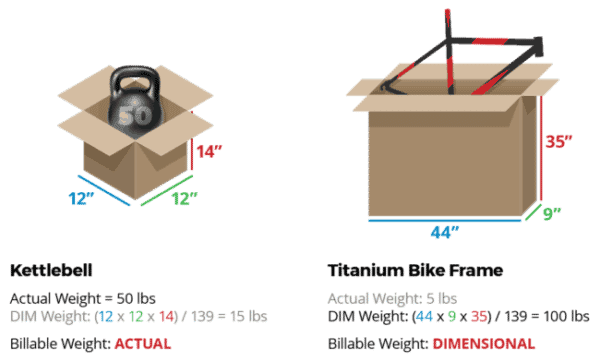
Source: webretailer.com
Shipping carriers also calculate the dimensional weight of your packages by multiplying the length, width, and height of the package, then dividing by a standard DIM divisor. You’ll be charged for whichever is greater—the actual weight of the package or its DIM weight.
This is useful for small but heavy parcels, and for odd-shaped and bulky items. It’s all about estimating how much space the package’s dimensions will take up on the delivery truck. Using a range of box sizes will help you reduce overall package volume.
Delivery Times
Delivery speed is also factored into the cost, with carriers charging more for premium shipping services within a guaranteed timeframe—think USPS Priority Mail Express or FedEx First Overnight. There may also be surcharges if you want the items to be delivered on the weekend or on a public holiday.
The main thing to remember is that your customers expect you to stick to the promised delivery time, whether it’s standard ground, 2nd-day, or same-day shipping.
Cost Comparison (vs. Competitors)
Because shipping costs vary widely between different carrier companies, it’s well worth carrying out regular comparisons to make sure you’re still getting the best deal. But what about the prices you charge customers?
You should also compare your shipping rates to those of your competitors on a regular basis—and if they are managing to offer discounted shipping without hiking their product prices, try to figure out how they’re doing it.
Factors That May Affect Shipping Costs
As well as those discussed in the previous section, there are a few other factors that influence shipping costs (plus a few things that are out of your hands, such as global oil prices and weather-related delays).
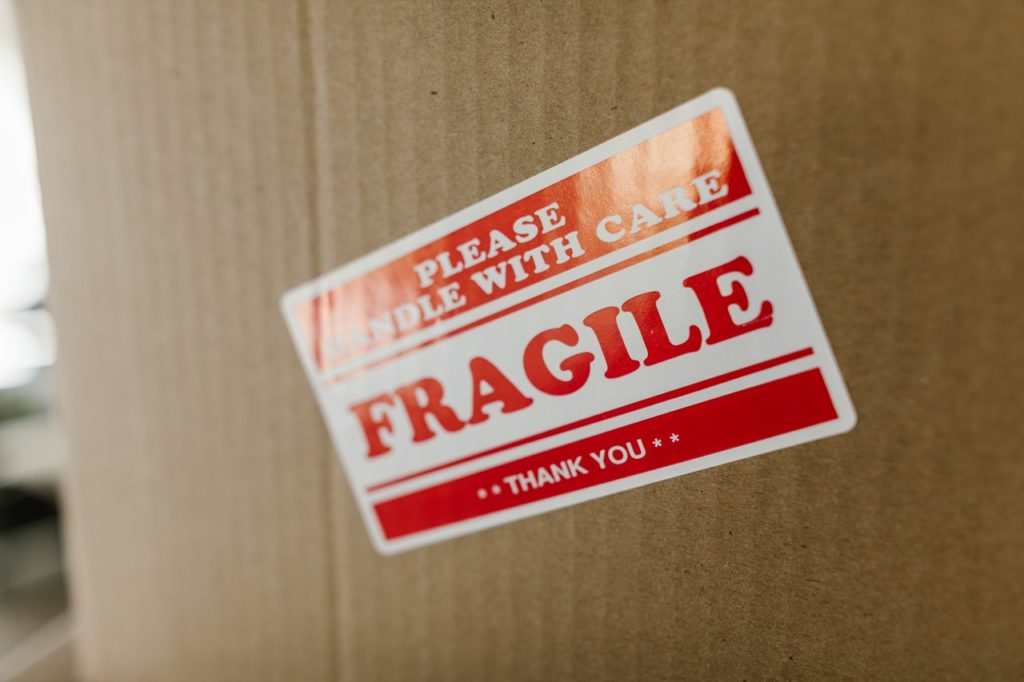
Insurance
Shipping insurance is one of those annoying but necessary business costs, and you shouldn’t be tempted to avoid buying it. If you’re shipping high-value, fragile, or confidential items, insurance is essential. And even if most of the items you deliver are low in value, it still makes sense to protect your business and your customers against loss, damage, or theft.
The cost of insurance can be as low as 3% of the shipment value, so shop around and compare vendors before signing up—you can sometimes get better deals through third-party providers. It’s a good idea to check customer reviews and weed out any vendors with too many complaints.
Charges
Extra charges are sometimes incurred for aspects of the shipping process, usually when the item or the journey doesn’t fit with the carrier’s standard practices. For instance, pickup charges may apply to deliveries and collections from locations not regularly serviced by the courier, such as remote areas or even residential addresses.
Fuel surcharges are common when using express services or when sending a package long-distance. They typically vary based on the current cost of fuel. You may also be charged for mistakes, which could include parcels being refused, multiple delivery attempts, items returned to sender, or amending an address during transit.
Other extra costs include handling-related charges for dangerous goods, heavy or bulky items that take two people to deliver, or oddly-shaped items. And you could be charged if you under-declare the value of an international shipment.
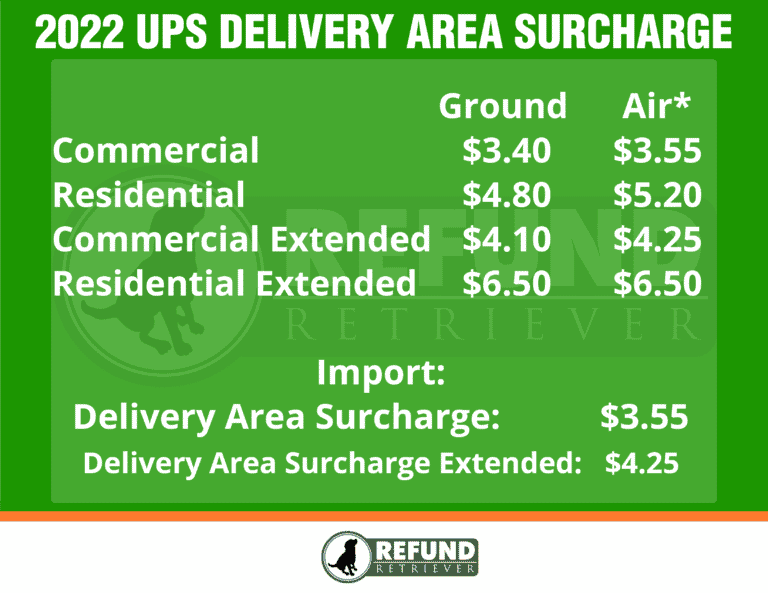
Source: refundretriever.com
Taxes
It’s important to be aware of the different taxes you’ll encounter. For example, import duty is the tax imposed by a government on goods from other countries, and it varies for each category of goods. We’ve already looked at the difference between DDP and DDU.
Domestically, VAT (Value Added Tax) is charged to consumers when they purchase goods or services. It taxes the value added to the item at each stage of its production, from raw materials to manufacturing to final sale. And GST (Goods & Services Tax) is a flat-rate percentage of the total transaction, charged in stages, then reimbursed to everyone except the end buyer.
Shipping With Brightpearl
Shipping costs are a fact of life, but there are ways to reduce them—and to offset some of the expenditure along the way. One approach is to handle all your fulfillment and shipping activities in a single platform, which is where the Brightpearl retail operating system comes in.
Brightpearl has integrations with all the major shipping carriers, so you can manage them in one place and sync your data. You can also offer your customers flexible shipping options via native connectors to Amazon FBA and 3PL providers, set up rules for dropshipping or multi-location fulfillment, and automatically select the most cost-effective carrier.
The Automation Engine helps you reduce costs right across the business, speeding up inventory audits with barcode scanners and auto-generating packing slips and shipping labels. You’ll save on labor and reduce costs caused by human error, which makes it more viable to offer free shipping to customers.
Meanwhile, you can reduce shipping costs further by using the Inventory Planner tool. Add the CBM (cubic meters) or weight of each item and it’ll appear on your purchase orders, helping to ensure that you fill shipping containers more efficiently and maximize capacity on trucks.
Other Benefits of Using Brightpearl
Apart from shipping, Brightpearl can help you streamline all your retail operations for maximum productivity and increased profit.
Demand Planning
With full visibility into your inventory, you can make smarter business decisions and ensure you always have the right amount of stock to meet demand—even at peak times. Brightpearl lets you log goods transfers, set up replenishment alerts, generate product performance reports, and use analytics and business intelligence to make accurate forecasts.
Order Management
The 360-degree view of your operations also gives you real-time insight into the status of customer orders. All your sales channels, warehouses, suppliers, and customer information are interconnected in one central hub, and data is synced in real-time whenever an order is picked, packed, or shipped.
You can set the system to automatically select the best fulfillment option for each channel or customer, whether that’s dropshipping, partial fulfillment, or multi-warehouse. Brightpearl enables you to process orders up to 70% faster—and once they’re dispatched, you can track progress and send updates to customers.
Returns Management
Returns can be the bane of a retailer’s life, but customers demand a free and simple returns policy. Brightpearl makes life easier by automatically initiating the sales credit or refund process as soon as returned items are received in the warehouse. You can also choose how and when to process the inventory, allowing it to be put back in stock, written off, or quarantined.
Scalable System
Brightpearl houses all your essential tools in one place, accessible to everyone via the cloud. Features like POS, CRM, and retail accounting are built into the platform, and you can choose from a huge range of native integrations to build the tech stack that suits your needs. They’re all purpose-built to handle huge volumes, so your business can Grow Fearlessly—backed by 24/7 support and your own Customer Success Team.
Final Thoughts
If you want to meet customers’ expectations for discounted shipping rates without bankrupting your business, you need to understand how to calculate your shipping costs. If you don’t take all the different factors into account, you’ll end up paying over the odds for shipping, and you’ll struggle to set the right prices for your products.
Using a platform such as Brightpearl makes it easier to manage shipping and keep the costs as low as possible—giving you an advantage over your competitors and encouraging customers to spend more with your company.
